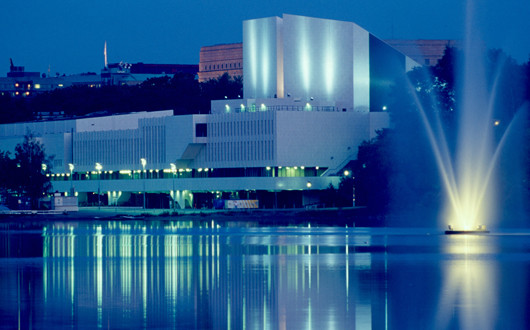Anyone who has visited an Apple store has sat in a sleek `high stool’ created by Finnish designer Alvar Aalto in 1935. His curvaceous Savoy vase is still an icon of Finnish design, even 75 years after its creation. But these internationally-known pieces are not the basis for Aalto’s title as the Father of Modernism in his home country.
Aalto’s true claim to fame is his architectural prolificacy, and his distinctive Nordic Modernist style is on display all around Finland. In architecture, Modernism was defined less by particular materials and features, and more by the concept of functionalism – that a building’s design should be driven by its purpose, foregoing unnecessary adornments and embellishments. Elements of functionalism are evident in most of Aalto’s work, especially his earlier designs.
During the course of the 20th century, the Finnish architect’s oeuvre changed and matured, going through phases in which he experimented with particular materials (eg, his `red brick period’) and styles (eg, monumentalism). Later on, his inclination for functionalism was often tempered with elements of humanism, in particular a softening of corners and an abundant use of wood and other natural materials.
Where Aalto was consistent – and original – was his devotion to the idea of Gensamkunstwerk, which means `total work of art.’ This was the idea that a piece of art – in this case, a building – incorporates many different art forms, not just architecture, but also craftsmanship, interior design and landscape design. As such, Aalto collaborated with his first wife Aino Aalto, and together they designed the furniture, light fixtures and other accessories that went into their constructions. He even dabbled in urban planning, lending his artistic vision to designs of university campuses and city centres.
Over the course of his 55-year career, Alvar Aalto worked on some 500 building projects: 400 of them were in Finland. Take a tour around southern Finland to see some of the highlights. Read more at BBC Travel…



Pingback: Villa Mairea
Pingback: Aalto Center